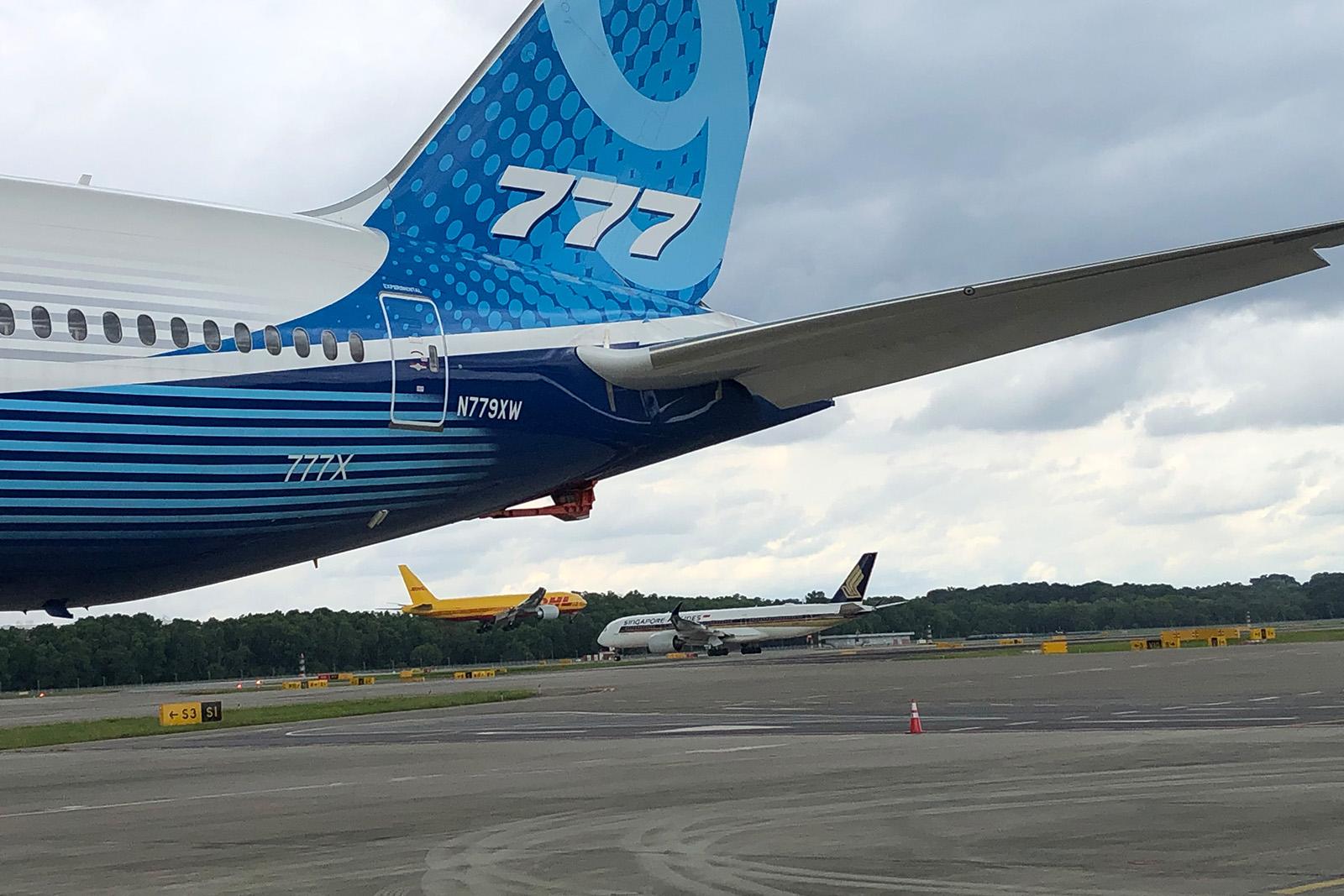
SINGAPORE—As Boeing continues to work toward the long-awaited award of FAA 777X type inspection authorization, the manufacturer is closing in on the final phases of key company flight tests of the big twinjet, covering structural loads, takeoff performance and icing.
Preparations for the next test phase, expected to last through May in a few areas, come as Boeing debuts the 777-9 at the Singapore Airshow. The aircraft arrived at Changi Airport after a 19 hr. 36 min. direct flight from the company’s production and test site in Seattle, marking both the 777X’s first appearance in Asia as well as the new model’s longest flight to-date.
“We will go into these tests with a Boeing mindset at this go around,” says Boeing 777/777X chief test pilot Van Chaney. “We’re still working with the regulators. When they decide the airplane is safe, we’ll go out and do that work, but right now we are still doing mostly Boeing testing.”
The start of certification tests of the 777-9 has been on hold since May 2021, when the FAA declined the manufacturer’s request for type inspection authorization (TIA), citing concerns over unresolved software and hardware issues. TIA approval marks the milestone when flight tests begin to earn credit toward certification.
The FAA normally issues a TIA when its examination of the data required for type certification is completed or has reached a point where it appears that the aircraft will meet the applicable regulations. However, with the program already under intense scrutiny following the 2019 grounding of the 737 MAX and following calls from the European Union Aviation Safety Agency (EASA) for modifications to the 777X flight control system, Boeing conceded in early 2021 that certification would take longer than expected and delayed first deliveries until late 2023.
Now, with the three aircraft in the test program having amassed more than 1,900 flight hours on over 650 flights, Chaney says Boeing is making good progress with its evaluation campaign and is operating transparently with the FAA as it steers toward TIA. “We’ve worked with our FAA counterparts, and they know where we are, what we’re testing and how things are going. We’re in constant communication with them. So even though it’s Boeing testing, we’re constantly letting them know and we’re talking every day.”
Following its appearance at Singapore, WH001—the first development 777-9—will return to the U.S., where it will conduct an extensive takeoff performance test campaign at Edwards AFB, California. Already fitted out for the tests with a belly-mounted camera system and tail skid, the aircraft will be used to evaluate performance across a matrix of low-speed and high-speed takeoff conditions, as well as extremely low-altitude ground effects tests.
The second 777-9 test aircraft, WH002, is undergoing additional stability and control evaluation, but within weeks is expected to fly to Fort Myers, Florida, for testing with artificial ice shapes. “You want warm weather because you don’t want to put ice on top of ice,” says Chaney, who adds the shapes replicate ice accumulations on leading edges associated with slow speed flight in icing conditions such as takeoff and holding. “It allows us to do a lot of work with a controlled, fixed shape. We still have to do natural ice testing, but this allows us to do a huge amount of work,” he says.
The third test aircraft, WH003, will shortly be based at Victorville, California, for dynamic loads testing, which will demonstrate the pressure distribution on the aircraft structure throughout the phases of flight in a variety of configurations.
